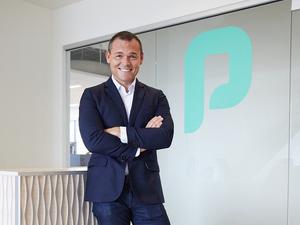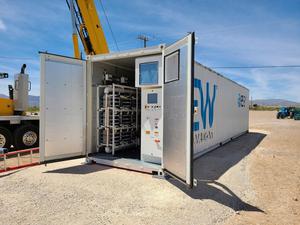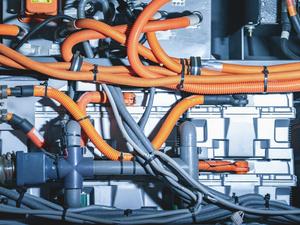
An Oregon State University researcher will use a $3 million federal grant to study a battery technology that avoids the use of elements that could come into short supply as electric vehicle adoption expands.
Xiulei “David” Ji, professor of chemistry at Oregon State, will lead a team that includes researchers from Howard University, the University of Maryland and Vanderbilt University on the project.
Growing demand for lithium-ion batteries that use nickel and cobalt, particularly for use in EVs, has raised concerns about the availability of those materials.
A recent paper in Nature noted that cobalt demand increased more than five times from 1995 to 2019, with nearly half of the cobalt used in 2019 going into batteries. “Such an escalating demand is expected to continue due to the fast diffusion of electric vehicles to combat climate and pollution challenges in the coming decades,” the paper said.
Lithium-ion batteries use the movement of lithium ions between two electrodes, the anode and cathode, to store and release electric charge. Cobalt and nickel are commonly used in the cathode.
Ji and his team are aiming to “potentially shift the paradigm” of the industry by using negatively charged ions, called anions, instead of positively charged ions, called cations. Early research shows that the anion batteries could do the work of current batteries while using carbon or metals such as copper as the electrodes.
“Our goal is to reveal the mechanisms behind those batteries and to understand the limiting factors in anion battery reactions,” Ji said in an OSU news release. “We also want to generate fundamental knowledge about the conditions and battery constituents that will allow anion-hosting batteries to deliver high energy density with a stable cycling life.”
It’s worth noting that even without the paradigm shift Ji and his colleagues envision, market pressure has led battery manufacturers to battery chemistries that move away from nickel and cobalt. BloombergNEF recently highlighted the rising use of lithium iron phosphate battery cells. Tesla for one has adopted LFP, although “most other Western automakers have so far stuck with nickel manganese cobalt batteries due to their higher energy density.”
LFP is cutting into the market share of batteries that use nickel and cobalt, but total demand is still rising as more and bigger EVs come onto the market.
Tesla also uses LFP batteries for its grid-scale storage business, as does Tualatin-based Powin, which counts Tesla as a chief rival. With grid storage, energy density isn't paramount, and LFP is considered to be a more stable battery. Another local battery company, ESS, uses an entirely different technology that uses no critical minerals.






